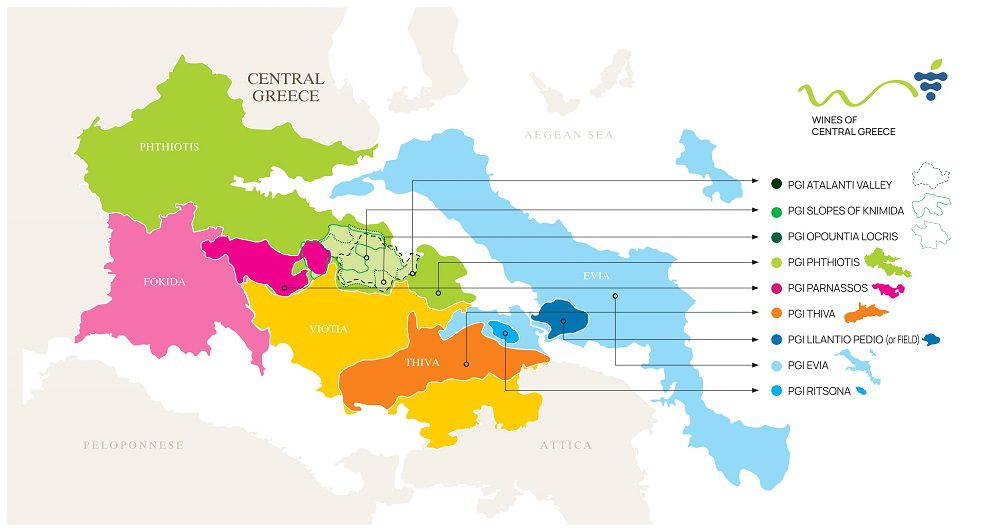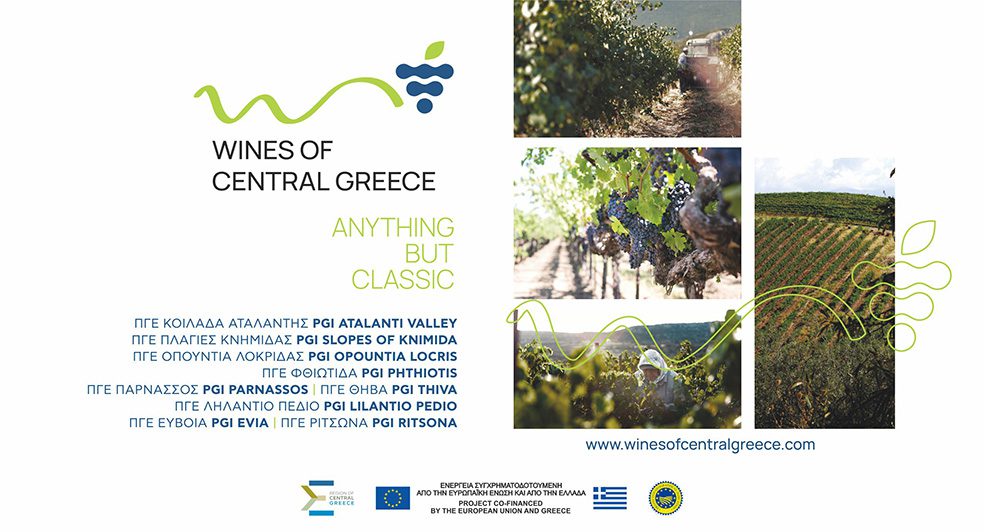Central Greece: The Future of Greek Viticulture
25th July 2022

The land that today is called Central Greece has always been the epicenter of the ancient Greek wine world. Wine, according to ancient scripts and archaeological excavations, was imported from the Middle East before expanding to the ancient Greek colonies in Southern Italy which brought wine to the Roman Empire.
In the 19th century, vine growing continued its long-standing presence in the region. Rural populations continued growing and tending their vines, despite the wars and the economic turbulences that marked the late 19th and early 20th centuries. In the 1950s, the region’s grapevines were largely destroyed by the destructive pest of ‘phylloxera’. Growers grafted the European vines onto American rootstocks to save the old vines, and production, which had long been associated with mass-produced table wines, began to shift.
There are very few places in Greece where the shift of attitudes in viticulture is more evident than Central Greece. For more than 40 years, local winemakers have been exploring the potential of the region’s wide variety of mesoclimates, cultivating both international and indigenous varieties. The range of wines produced is now the most diverse in Greece.
The young generation of wine growers questioned the established vineyard areas, the traditional varieties and cultivation techniques. First, they opted for cooler areas – in the foothills of Mt Olympus, in the Atalanti Valley, in Dirfi or Ritsona in Evia, or on mountains further south, like Kitherona, Gerania or Penteli. They planted native varieties from other parts of Greece, mainly Assyrtiko and Malagousia, alongside international varieties including Sauvignon Blanc, Chardonnay, Syrah and Cabernet Sauvignon. They have also resurrected forgotten local grapes, including Limniona in Thessaly, Mavrokoundoura in Evia or Mouhtaro in Viotia. Many producers adopted one, two or all of these different approaches, with stunning results, making many of the New Wines of Greece triumphs.

The combination of unique mesoclimates, successful vineyard management, promising rare varieties and skilled and dedicated winemakers have helped Central Greece’s wine trade to blossom. The region boasts nine Protected Geographical Indication wine zones: PGI Atalanti Valley, PGI Slopes of Knimida, PGI Opountia Locris, PGI Phthiotis, PGI Parnassos, PGI Thiva, PGI Lilantio Pedio, PGI Evia and PGI Ritsona
Several indigenous grape varieties have been revived in recent years by the local vine growers and winemakers in their quest to preserve Greece’s viticultural heritage. The wines today produced in Central Greece are among the most exciting and dynamic in all of Greece, making Central Greece a region well worth exploring.

Discover more at: www.winesofcentralgreece.com
![]()
Glass of Bubbly Content
Content shared by this account is either news shared free by third parties or advertising content from third parties and affiliations. Please be advised that links to third party websites are not endorsed by Glass of Bubbly Ltd - Please do your own research before committing to any third party business promoted on our website.
